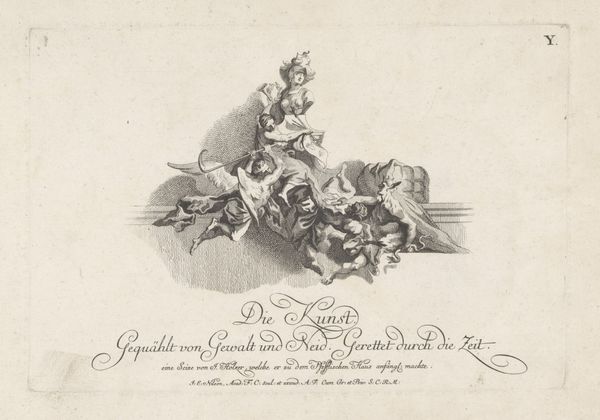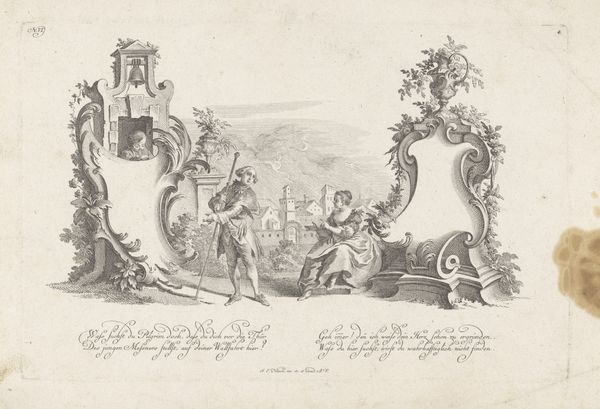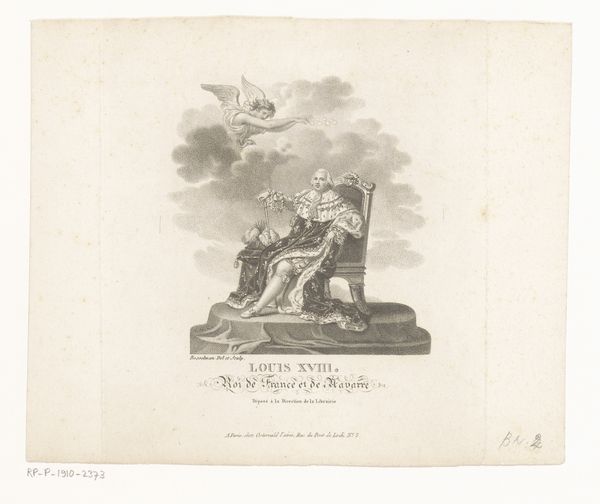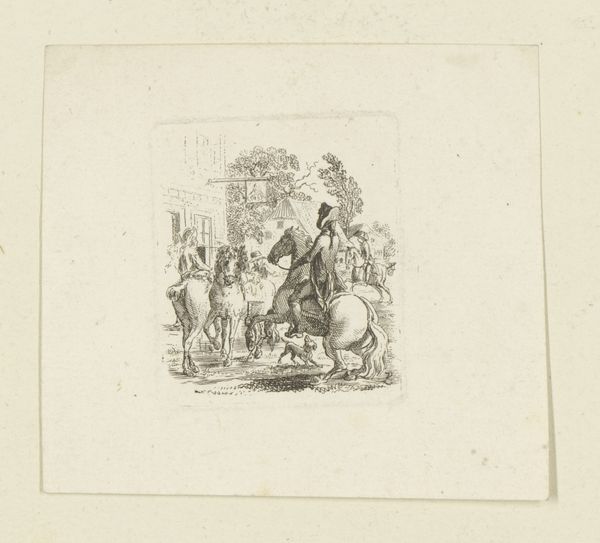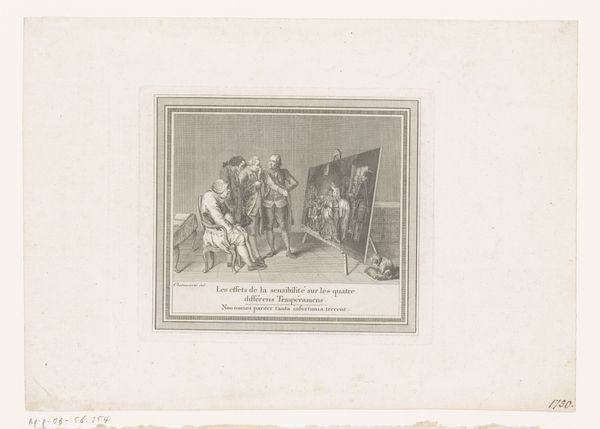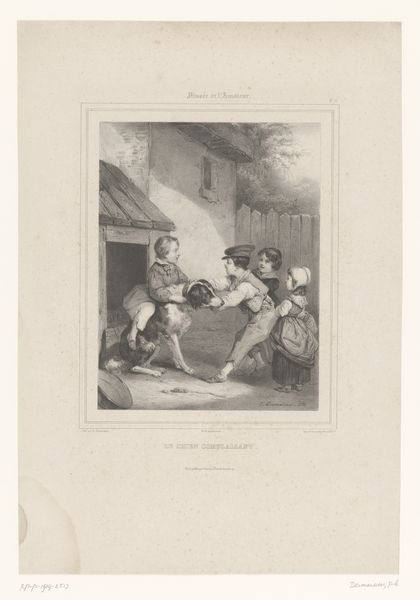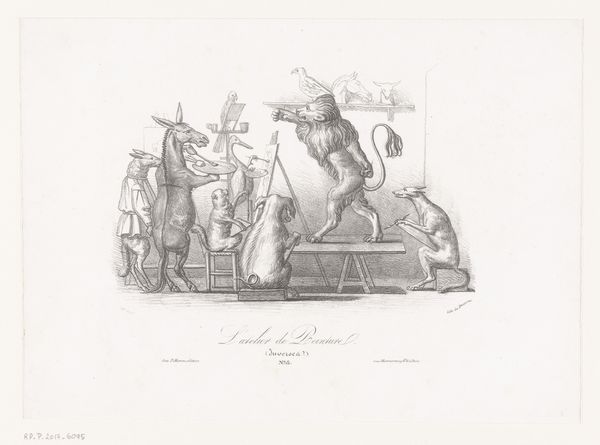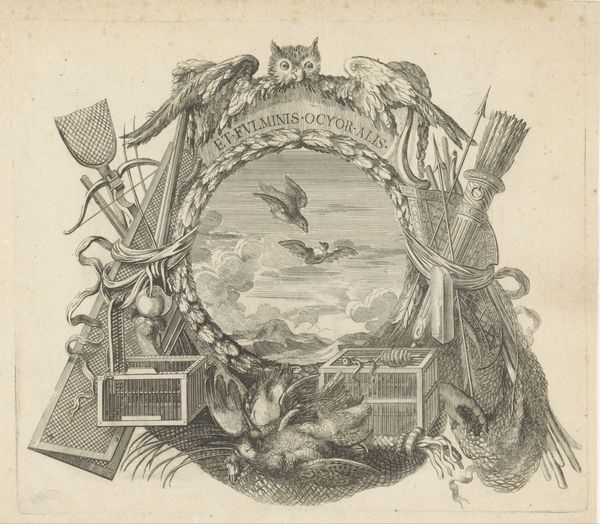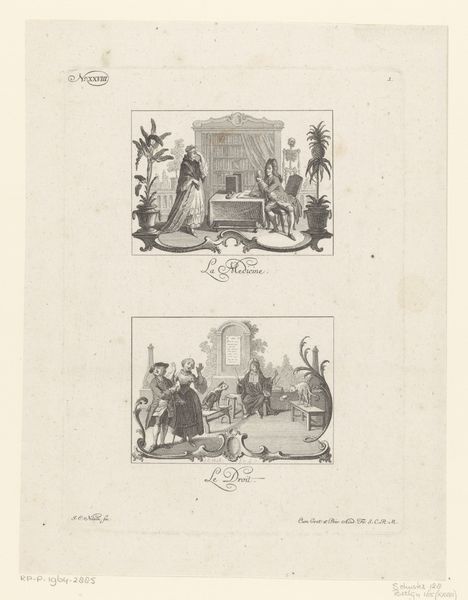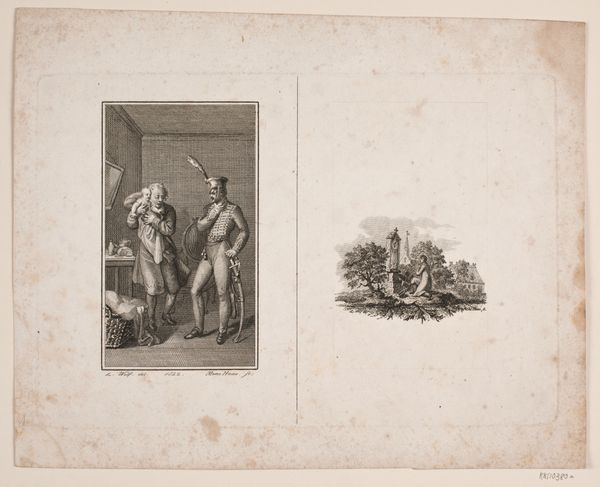
Dimensions: height 166 mm, width 246 mm
Copyright: Rijks Museum: Open Domain
This print, "Wetenschap en handel" – or “Science and Trade” – was created by Johann Esaias Nilson, a German artist active in the 18th century. It's made using etching, a printmaking technique that allowed for the relatively quick production of detailed images. The image shows allegorical figures amidst clouds, representing the arts, sciences, and commerce. Look closely and you'll notice that the composition is designed to convey a sense of progress and prosperity, typical of the Enlightenment era. But the medium itself tells another story. Etching, though faster than engraving, still required skilled labor. The artist would have coated a metal plate with wax, drawn their design, and then submerged the plate in acid, which bit into the exposed lines. This process, and the subsequent inking and printing, involved specialized knowledge and physical effort. Nilson wasn't just an artist, he was part of a broader system of production. Prints like these were crucial for disseminating knowledge and ideas, and they also served as decorative objects for a growing middle class. By considering both the image and its means of production, we can appreciate the complex relationship between art, labor, and commerce in the 1700s.
Comments
No comments
Be the first to comment and join the conversation on the ultimate creative platform.
